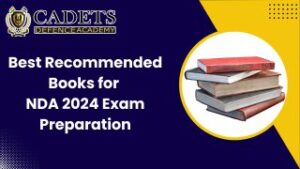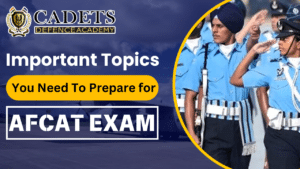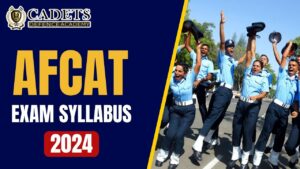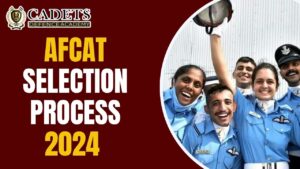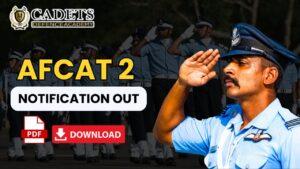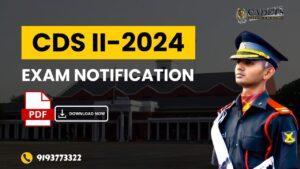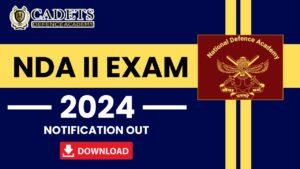The National Defence Academy (NDA) is a joint service academy of the Indian Armed Forces. It is located in Khadakwasla, Pune, Maharashtra. The NDA exam is conducted by the Union Public Service Commission (UPSC) twice a year, in April and September.
The NDA exam is a two-stage selection process. The first stage is a written test, which is followed by an interview and medical examination. The written test consists of two papers: Mathematics and General Ability Test (GAT).
Eligibility Criteria 2024
NDA Application form 2024
From December 20, 2023 through January 9, 2024, the NDA 1 application form will be accessible. Between May 15 and June 4, 2024, the NDA 2 application form will be accessible. Candidates must complete an online NDA application form for 2024. The application price is 100, although those who fall under the SC, ST, NCO, Son of JCO, or ORS categories are not required to pay anything. You have the option of paying the application cost offline or online.
The steps to fill the NDA application form are given below:
- Visit the official website of UPSC
- New users need to complete the OTR Process
- The registered users can directly fill NDA application form 2024
- Registration comprises two parts i.e. Part I & Part II
- Part I includes candidate’s registration, choosing the preferred branch, verifying details and generation of registration ID
- In Part II, candidates need to pay the application fees, select the exam centre, upload scanned images of photographs and signatures
- After filling both the parts successfully, candidates can submit the NDA application form
- Candidates should take the printout of NDA application form and fee transaction receipt.
NDA Eligibility Criteria 2024
- NDA eligibility criteria includes nationality, educational qualification and age limit. Candidates applying for NDA 2024 exam are required to fulfill the required eligibility. NDA eligibility criteria 2024 is given below:
NDA Nationality
- Candidates must be an Indian citizen/ subject of Nepal/ subject of Bhutan/ refugee of Tibetan who came to India before 1st January 1962 with the intention to settle permanently in India.
- Candidates who have migrated from Burma, Pakistan, Sri Lanka and east African countries of Zambia, Tanzania, Zaire, Ethiopia, Malawi, Uganda or Vietnam with an intention of settlement in India can also apply.
- Foreign nationals (except Gorkhas) will be required to produce a certificate of eligibility which is issued by Govt. of India
NDA Age Limit
- NDA age limit is 16.5 to 19.5 years. For NDA 1 2024, only unmarried male/female candidates born not earlier than July 2, 2004 and not later than July 1, 2007can apply for the exam. For NDA 2 2024, candidates must have born not earlier than January 2, 2005 and not later than January 1, 2008 are eligible for the exam.
NDA Educational Qualification
- Candidates who have passed or are appearing in Class 12 can apply for the NDA 2024 exam. Candidates applying for Air Force, Navy, and Naval Academy of National Defence Academy should study Physics, Chemistry and Maths in Class 12.
Gender & Marital Status
- Both male and female candidates can apply for NDA 2024 exam. Candidates are not allowed to marry until they complete their training period
NDA Physical Standards
- Candidates must be physically fit to be eligible for the exam
Download NDA Syllabus Pdf
NDA Exam Overview 2024: Your Gateway to a Military Career
Are you ready to take your first step towards an illustrious military career? The National Defence Academy (NDA) Exam 2024, conducted by the Union Public Service Commission (UPSC), offers an exceptional opportunity for young aspirants to join the prestigious ranks of the armed forces. Whether you dream of serving in the Indian Army, Navy, or Air Force, the NDA Exam serves as the gateway to realizing your aspirations.
NDA Exam Pattern
NDA Exam Overview 2024 |
Name of the Exam | National Defence Academy (NDA) |
Conducting Body | Union Public Service Commission (UPSC) |
Frequency of the Exam | Twice in a Year (April & September 2024) |
Selection Process | 1.Written Test (Objective Type Question) |
2.Intelligence & Personality Test (SSB) |
Mode of Exam | Offline |
Papers in NDA Exam | 1.Mathematics |
2. General Ability Test |
Total Marks | 1.Mathematics – 300 marks |
2. General Ability Test – 600 marks |
Total No. of Question | 1.Mathematics – 120 question |
2. General Ability Test – 150 question |
Negative Marking | 1.Mathematics – 0.83 marks |
2.General Ability Test – 1.33 marks |
Exam Duration | 1.Mathematics – 2.5 hours |
| | 2.General Ability Test – 2.5 hours |
Language of the Question Paper | Bilingual Note: English Language paper has to be attempted in English. |
Exam Name: National Defence Academy (NDA) Exam
Conducting Body: Union Public Service Commission (UPSC)
Frequency of Exam: Twice in a Year (April & September 2024)
Mode of Exam: Offline
Selection Process:
Written Test (Objective Type Question): The first step in the selection process is the written test, which is designed to assess your aptitude in two key areas: Mathematics and General Ability. This objective-type paper evaluates your problem-solving skills, logical reasoning, and academic acumen.
Intelligence & Personality Test (SSB):Successful candidates from the written test proceed to the next stage, which involves the Intelligence and Personality Test conducted by the Services Selection Board (SSB). This stage involves comprehensive assessment techniques to evaluate your suitability for a career in the armed forces. It includes psychological tests, group discussions, and personal interviews.
Papers in NDA Exam:
Mathematics: This paper assesses your mathematical proficiency and understanding of key concepts. With a total of 300 marks, this section tests your ability to solve mathematical problems efficiently.
General Ability Test: The General Ability Test is further divided into two sections – English and General Knowledge. This comprehensive paper is worth 600 marks, testing your command over the English language and your awareness of current affairs, general knowledge, and other pertinent subjects.
Exam Details:
- Total Marks: Mathematics (300 marks), General Ability Test (600 marks)
- Total Number of Questions: Mathematics (120 questions), General Ability Test (150 questions)
- Negative Marking: For Mathematics, each incorrect answer carries a penalty of 0.83 marks deducted. In the General Ability Test, there’s a deduction of 1.33 marks for every incorrect response.
- Exam Duration: Mathematics (2.5 hours), General Ability Test (2.5 hours)
- Language of the Question Paper: The question paper is bilingual, allowing you to attempt it in either Hindi or English. However, it’s important to note that the English Language paper must be attempted solely in English.
The NDA Exam 2024 is your opportunity to join the elite ranks of the armed forces, embarking on a journey of honor, service, and excellence. Prepare diligently, hone your skills, and showcase your potential to become a future leader of the Indian military. Remember, success in the NDA Exam opens doors to a world of adventure, responsibility, and the chance to contribute to the security and integrity of the nation. Seize this opportunity, and take the first step towards a fulfilling and impactful career in the armed forces.
NDA Mathematics Exam Pattern
NDA Mathematics Exam Pattern |
Total No. of Questions | 120 |
Total Marks | 300 |
Marks for the correct answer | 2.5 marks |
Negative Marking | 0.83 marks |
Exam Duration | 2.5 hours |
Mathematics paper of the NDA exam is a 300-mark paper consisting of 120 objective-type questions. The questions are designed to test the candidate’s knowledge of topics such as algebra, geometry, trigonometry, calculus, and statistics.
Marking Scheme
- For every correct answer, the candidate will be awarded 2.5 marks.
- For every incorrect answer, 0.83 marks will be deducted.
Exam Duration
The NDA Mathematics exam is of 2.5 hours duration. This means that the candidate has 2.5 hours to answer all 120 questions. It is important to manage time wisely and attempt as many questions as possible within the stipulated time.
Tips for Preparation
The following are some tips for preparing for the NDA Mathematics exam:
- Start early and study regularly.
- Make sure you have a strong foundation in the basics of mathematics.
- Practice solving previous year’s questions.
- Join a good coaching institute or take online courses.
- Stay motivated and don’t give up.
NDA General Ability Exam Pattern
General Ability Exam Pattern |
Total No. of Questions | 150 |
Total Marks | 600 marks |
No. of questions in English Section | 50 |
No. of questions in General Knowledge Section | 100 |
Total Marks for English | 200 marks |
Total Marks for G.K | 400 marks |
Marks for Correct Answers | 1.English – 4 marks |
2.G.K – 4 marks |
Negative Marking | 1.English – 1.33 marks |
2.G.K – 1.33 marks |
Exam Duration | 2.5 hours |
The GAT paper consists of two sections:
English and General Knowledge.
English Section
The English section has 50 questions, each worth 4 marks. This means that the total marks for the English section are 200. The questions in this section will test your knowledge of English grammar, vocabulary, comprehension, and usage.
General Knowledge Section
The General Knowledge section has 100 questions, each worth 4 marks. This means that the total marks for the General Knowledge section are 400. The questions in this section will test your knowledge of general topics, such as current affairs, history, geography, science, and mathematics.
Negative Marking
There is negative marking in the GAT exam. The negative marking for the English section is 1.33 marks
per wrong answer, and the negative marking for the General Knowledge section is also 1.33 marks per wrong answer.
Exam Duration
The GAT exam is a 2.5-hour exam. This means that you will have 150 minutes to complete the exam.
Download NDA SSB Interview Exam Pattern PDF 2024
SSB Interview Pattern for NDA Exam
NDA Exam Pattern for SSB Interview |
Stage 1 | Screening Test | 1.Verbal & Non-Verbal Test 2.Picture Perception and Discussion Test (PPDT) |
Stage 2 | Psychological Test | 1.Thematic Apperception Test (TAT) |
2.Word Association Test (WAT) |
3.Situation Reaction Test (SRT) |
4.Self Description Test (SDT) |
Group Testing Officer Task | 1.Group Discussion (GD) |
2. Group Planning Exercise (GPE) |
3. Progressive Group Task (PGT) |
4. Half Group Task (HGT) |
Personal Interview & Conference | —– |
NDA SSB Interview Process
Stage 1:
Screening Test
The Screening Test is conducted for all candidates who have qualified the written examination. It is a two-part test:
1.Verbal and Non-Verbal Test: This test assesses the candidate’s verbal and non-verbal reasoning skills. It consists of questions on analogies, similarities and differences, coding and decoding, spatial visualization, and figural reasoning.
- Picture Perception and Discussion Test (PPDT): This test assesses the candidate’s ability to perceive and interpret visual information. It consists of a series of pictures, and the candidate is asked to write a short story about each picture. The candidate is also asked to discuss their stories with the other candidates.
Stage 2:
1.Psychological Test
The Psychological Test is conducted to assess the candidate’s personality, interests, and motivation. It consists of the following tests:
1.Thematic Apperception Test (TAT): This test is a projective test that assesses the candidate’s unconscious mind. The candidate is shown a series of ambiguous pictures and asked to tell a story about each picture.
2.Word Association Test (WAT): This test assesses the candidate’s thought processes and associations. The candidate is presented with a series of words and asked to say the first word that comes to their mind.
3.Situation Reaction Test (SRT): This test assesses the candidate’s ability to handle stressful situations. The candidate is presented with a series of hypothetical situations and asked how they would react.
4.Self Description Test (SDT): This test assesses the candidate’s self-concept. The candidate is asked to write a short essay about themselves.
2.Group Testing Officer Task
The Group Testing Officer Task is conducted to assess the candidate’s teamwork, leadership, and communication skills. It consists of the following tasks:
Group Discussion (GD): The candidate is placed in a group of 6-8 candidates and asked to discuss a given topic. The candidate’s ability to participate in the discussion, contribute ideas, and build consensus is assessed.
Group Planning Exercise (GPE): The candidate is placed in a group of 6-8 candidates and asked to plan and execute a task. The candidate’s ability to take initiative, work with others, and solve problems is assessed.
Progressive Group Task (PGT): The candidate is placed in a group of 6-8 candidates and asked to complete a series of tasks. The candidate’s ability to work under pressure, follow instructions, and meet deadlines is assessed.
Half Group Task (HGT): The candidate is placed in a group of 3-4 candidates and asked to complete a task. The candidate’s ability to take charge, make decisions, and motivate others is assessed.
Personal Interview & Conference
The Personal Interview and Conference is conducted by a panel of officers. The panel will ask the candidate questions about their background, motivation, and suitability for a career in the armed forces. The panel will also assess the candidate’s personality, bearing, and overall suitability for the job.
The total marks for the SSB interview are 900. The candidate must secure a minimum of 200 marks in order to qualify.
The SSB interview is a challenging but rewarding experience. It is an opportunity for the candidate to demonstrate their potential to become an officer in the armed forces.
What Does the NDA Exam Syllabus Include
NDA Mathematics Syllabus |
Topic | Sub Topic |
Algebra | 1.Sets (Concepts & Operations) 2.Venn diagram 3.De Morgan’s Law 4.Cartesian Product 5.Relation 6.Equivalence Relation 7.Real Numbers 8.Complex Numbers 9.Modulus 10.Cube Root 11.Conversion of a number (Binary to Decimal & Decimal to Binary) 12.Arithmetic 13.Geometric and Harmonic Progressions 14.Quadratic Equations 15.Linear Inequations 16.Permutation and Combination 17.Binomial Theorem 18.Logarithms |
Calculus | 1.Concept of a real valued function 2.Domain 3.Range and Graph of a function 4.Composite functions 5.One to One 6.Onto and Inverse Functions 7.Notion of limit 8.Standard limits 9.Continuity of functions 10.Algebric Operations on Continuous functions 11.Derivative of function at a point 12.Geometrical and Physical Interpretation of a derivative application 13.Derivatives of sum 14.Product and Quotient of functions 15.Derivative of a function with respect to another function 16.Derivative of a Composite Function 17.Second Order Derivatives 18.Increasing and Decreasing Function 19.Application of Derivatives in problems of Maxima and Minima |
Matrices and Determinants | 1.Types of matrices 2.Operations on matrices 3.Determinant of a matrix 4.Basic Properties of Determinants 5.Adjoint and Inverse of a Square Matrix 6.Applications-Solution of a system of Linear Equations in two or three unknown by – 1. Cramer’s Rule 2.Matrix Method |
Integral Calculus and Differential Equations | 1.Integration as inverse of differentiation 2.Integration by substitution and by parts 3.Standard Integrals involving algebraic Expressions 4.Trigonometric 5.Exponential and Hyperbolic Functions 6.Evaluation of definite Integrals – Determination of areas of plane regions bounded by curves-applications 7.Definition of order and degree of a differential equation by examples. 8.General and particular solution of differential equations 9.Solution of first order and first-degree differential equations of various types by examples 10.Application in problems of growth and decay |
Trigonometry | 1.Angles and their measures in degrees and in radius 2.Trigonometric Ratio 3.Trigonometric Identities 4.Sum and Difference Formulae 5.Multiple and Sub-Multiple Angles 6.Inverse Trigonometric Functions 7.Applications – Height and Distance 8.Properties of Triangles |
Vector Algebra | 1.Vectors in two and three dimensions 2.Magnitude and Direction of a vector 3.Unit and Null Vectors 4.The Addition of Vectors 5.Scalar Multiplication of a Vector 6.Scalar Product 7.Dot Product of two vectors 8.Vector product or Cross product of two vectors 9.Applications- Work done by Force and Moment of a Force in Geometrical Problems. |
Analytical Geometry of Two or Three Dimension | 1.Rectangular Cartesian Coordinate System 2.Distance Formula 3.Equation of a line in various forms 4.The angle between two lines 5.Distance of a point from a line 6.Equation of a circle in standard and in a general form 7.Standard forms of Parabola, Ellipse and Hyperbola 8.Eccentricity and Axis of a conic 9.Point in a three-dimensional space 10.The distance between two points 11.Direction, Cosines and Direction Ratio 12. Equation two points 13.Direction Cosines and direction ratios 14. Equation of a plane and a line in various forms 15.Angle between two lines and angle between two planes 16.Equation of a sphere |
Statistics and Probability | 1.Probability: Random experiment, outcomes, and associated sample space, events, mutually exclusive and exhaustive events, impossible and certain events 2.Union and Intersection of events. Complementary, elementary, and composite events 3.Definition of probability—classical and statistical—examples 4.Elementary theorems on probability-simple problems 5. Conditional probability, Bayes’ theorem—simple problems 6. Random variable as function on a sample space 7.Binomial Distribution 8. Examples of random experiments giving rise to Binomial distribution |
Download Maths Syllabus PDF
NDA English Syllabus pdf
English Syllabus for NDA Exam 2024 |
Topic | Total Marks |
Spotting Error | 20 |
Comprehension | 24 |
Selecting words | 40 |
Synonyms | 20 |
Antonyms | 20 |
Ordering of words in a sentence | 36 |
Sentence Improvement | 40 |
Total | 200 marks |
NDA GAT Syllabus PDF
General Ability Test Syllabus for NDA Exam |
Subject | Topic |
Physics | 1. Physical Properties and States of Matter 2. Modes of transference of Heat 3. Mass, Weight, Volume, Sound waves and their properties 4. Simple musical instruments 5. Rectilinear propagation of Light 6. Density and Specific Gravity 7.Reflection and refraction 8.Principle of Archimedes 9. Spherical mirrors and Lenses 10. Pressure Barometer 11. Human Eye 12. Motion of objects 13. Natural and Artificial Magnets 14. Velocity and Acceleration 15. Properties of a Magnet 16. Newton’s Laws of Motion 17. Earth as a Magnet 18. Force and Momentum 19. Static and Current Electricity 20. Parallelogram of Forces 21. Conductors and Non-conductors 22. Stability and Equilibrium of bodies 23. Ohm’s Law 24. Gravitation 25. Simple Electrical Circuits 26. Elementary ideas of work 27. Heating, Lighting, and Magnetic effects of Current 28. Power and Energy 29. Measurement of Electrical Power 30. Effects of Heat 31. Primary and Secondary Cells 32. Measurement of Temperature and Heat 33. Use of X-Rays 34. General Principles in the working of Simple Pendulum, Simple Pulleys, Siphon, Levers, Balloon, Pumps, Hydrometer, Pressure Cooker, Thermos Flask, Gramophone, Telegraphs, Telephone, Periscope, Telescope, Microscope, Mariner’s Compass; Lightning Conductors, Safety Fuses. |
Chemistry | 1.Preparation and Preparation and Properties of Hydrogen, Oxygen, Nitrogen and Carbon Dioxide, Oxidation and Reduction. 2.Acids, bases and salts 3.Carbon – Different Forms 4. Physical and Chemical Changes 5. Fertilizers—Natural and Artificial 6. Elements 7. Material used in the preparation of substances like Soap, Glass, Ink, Paper, Cement, Paints, Safety Matches, and Gunpowder 8. Mixtures and Compounds 9. Elementary ideas about the structure of Atom 10.Symbols, Formulae, and simple Chemical Equation 11.Atomic Equivalent and Molecular Weights 12.Law of Chemical Combination (excluding problems) 13.Valency 14.Properties of Air and Water |
General Science | 1.Common Epidemics, their causes, and prevention 2. Difference between the living and non-living 3. Food—Source of Energy for man 4. Basis of Life—Cells, Protoplasm, and Tissues 5. Constituents of food 6. Growth and Reproduction in Plants and Animals 7. Balanced Diet 8. Elementary knowledge of the Human Body and its important organs 9.The Solar System—Meteors and Comets, Eclipses. Achievements of Eminent Scientists |
History | 1. Forces shaping the modern world 2. Renaissance 3. Exploration and Discovery; 4. A broad survey of Indian History, with emphasis on Culture and Civilization 5. Freedom Movement in India 6. French Revolution, Industrial Revolution, and Russian Revolution 7. War of American Independence, 8. Impact of Science and Technology on Society 9. Elementary study of Indian Constitution and Administration 10. Concept of one World 11. Elementary knowledge of Five-Year Plan of India 12. United Nations, 13. Panchsheel 14. Panchayati Raj, Democracy, Socialism and Communist 15. Role of India in the present world 16. Co-operatives and Community Development 17. Bhoodan, Sarvodaya, 18. National Integration and Welfare State 19. Basic Teachings of Mahatma Gandhi |
Geography | 1. The Earth, its shape and size 2. Ocean Currents and Tides Atmosphere and its composition 3. Latitudes and Longitudes 4. Temperature and Atmospheric Pressure, Planetary Winds, Cyclones, and Anticyclones; Humidity; Condensation and Precipitation 5. Concept of time 6. Types of Climate 7. International Date Line 8. Major Natural Regions of the World 9. Movements of Earth and their effects 10. Regional Geography of India 11. Climate, Natural vegetation. Mineral and Power resources 12. Location and distribution of agricultural and Industrial activities 13. Origin of Earth. Rocks and their classification 14. Important Sea ports and main sea, land, and air routes of India 15. Weathering—Mechanical and Chemical, Earthquakes and Volcanoes 16. Main items of Imports and Exports of India |
Current Events | |
Why Cadets Defence Academy is the Best NDA Coaching in Dehradun?
- High success rate: The academy has a high success rate in getting its students selected for the NDA exam. In 2022, the academy had a success rate of 90%.
- Experienced faculty: The academy has a team of experienced and qualified faculty who are experts in the NDA exam syllabus. They are able to provide students with the knowledge and skills they need to succeed in the exam.
- Regular tests and assessments: The academy conducts regular tests and assessments to help students track their progress and identify areas where they need improvement. This helps students stay motivated and focused on their goals.
- Personalized attention: The academy provides personalized attention to each student. This ensures that each student gets the help they need to succeed.
- Modern infrastructure: The academy has modern infrastructure, including well-equipped classrooms, a library, and a hostel. This provides students with a conducive environment to study and prepare for the NDA exam.
- Value for money: The academy offers value for money. The fees are affordable and the quality of education is top-notch.
Best SSB Coaching in Dehradun
- Personality development training: The academy provides personality development training to help students improve their communication, leadership, and teamwork skills. These skills are essential for success in the NDA exam and in the armed forces.
- Mock interviews: The academy conducts mock interviews to help students prepare for the SSB interview. The SSB interview is an important part of the NDA selection process and mock interviews can help students gain confidence and practice their answers.
- Placement assistance: The academy provides placement assistance to its students. This includes helping them with their resume, preparing them for job interviews, and connecting them with potential employers.
Join Cadets Defence Academy for the premier NDA coaching experience in Dehradun! Our academy is dedicated to providing top-notch training to help you excel in the National Defence Academy (NDA) entrance exam. Don’t miss out on this incredible opportunity to fulfill your dreams of serving your country.







